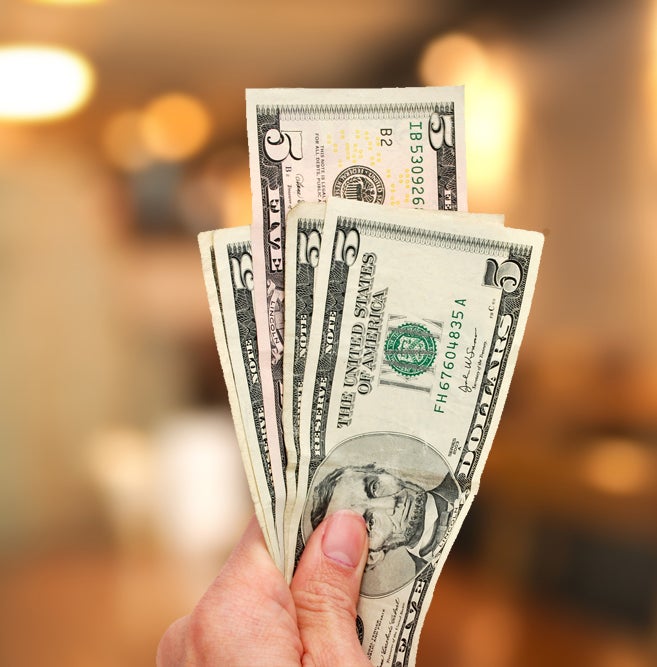
Are you a careless budgeter? A spending addict? Wondering how you’ll pay for your child’s education? Always broke? Burdened with credit card debt? Perhaps you’re behind on retirement savings or you want to create greater wealth for your family. Maybe you feel that getting ahead is impossible and that financial security is forever out of reach. A financial fast might be just the thing for you.
Monetary goals are inherently tough to reach. Solutions can seem overwhelming despite an abundance of published advice. Strategies for overcoming financial woes are as numerous as the websites that pop up on a Google search. One strategy rises above the rest because it strives to define and improve the consumer’s personal relationship with money. The objective is to make a plan for achieving dollar goals and then open the door and walk through to financial freedom. The 21-day financial fast pioneered by the Washington Post’s personal finance columnist, Michelle Singletary, offers some highly compelling assembly instructions that anyone can follow.
The goal of the fast is to help break unproductive habits that have kept you from reaching your financial goals. Of course, paying off debt is part of the plan but the fast does not focus on debt alone. More importantly, the fast clearly depicts the tools needed to construct financial success.
The 21-day financial fast
As the title implies, this is a three-week window in which the participant commits to buying only necessities, and only with cash. This is also a learning experience, with a new topic introduced each day. The regimen is compact and focused, and it gets results. Participants learn about budgeting, credit, debt, retirement, long-term care, and other critical financial topics. The fast delivers a concentrated dose of personal finance knowledge to propel the candidate toward deeper knowledge and understanding of money matters.
Singletary’s model is the non-denominational and financial version of the spiritually directed Daniel Fast. For Singletary, the objective is entirely a more positive, practical and intimate relationship with money, an earthly power we all contend with.
How do you do the fast?
Learn and practice. Read a new chapter from Singletary’s book each day and complete a few basic homework assignments, like creating a budget and a spending journal. Chapters discuss money management from multiple angles including entitlement, saving, investing, charitable giving, credit and debt, and managing money in a relationship.
Fast. Like the dietary kind where you put down the fork, a financial fast requirement is to stop consuming. Don’t buy anything that isn’t necessary. In the early days, you’ll learn what “need” really means. Many fasters have to make a significant lifestyle change in order to cut restaurant meals. You also may not shop for clothing or spend money on entertainment. Food, medicines and essential toiletries (shampoo, yes; wrinkle cream, no) are permitted. Trips to the hair salon are not.
Look within. Singletary discourages fasters from simply postponing purchases like gifts for occasions that fall during the fast. Instead, she asks fasters to skip the purchase altogether and find alternative ways to express love or mark the occasion. Fasters notice and explore the emotional impact of foregoing gifts and look for ways to celebrate special times without a price tag attached.
Avoid plastic. Plastic is forbidden. No credit cards whatsoever, and no debit cards either. Singletary does not believe that debit cards are the same as cash. Only cash is cash. She explains that swiping makes purchasing too easy and that even people who are in the habit of paying off their credit cards every month incur unnecessary cost. We buy more when we use plastic.
Stick with it. The fast needs to last 21 days. The time is required to experience the transformation in thoughts and behaviors. The fast need not continue beyond three weeks. However, participants often do choose to repeat the experience to more deeply absorb its lessons and to fine tune their financial plans.
Lessons learned from the fast
Greater awareness. Participants invariably report that fasting gave them much greater insight into their spending habits and financial priorities. One mom blogged that, “just the fact that I am actually taking the time to think about [spending] is a major win.” Many fasters share the same enlightenment. And for anyone who doesn’t have a solid budget in place, the fast quickly shows where the money goes.
Debt is never good. Debt drags us down. We never have true financial independence as long as we are financially beholden to someone else. Although some debt is more damaging, debt of any description is a weight to bear.
Wealth hides. Countless fasters proclaim huge success at the end of the three weeks because they are delighted to discover how much money they didn’t spend. Cutting out restaurant eating alone can result in a savings of hundreds of dollars each month. Eliminating unnecessary spending opens our eyes to the amount of money wasted on things that are really no more than fleeting pleasures, but can never rank among true financial priorities.
Anyone can improve their financial standing. Unless your money management skills are already perfect, anyone at all benefits from the fast. Consumers at all income levels and with nearly any amount of personal finance knowledge gain additional insight and knowledge. Some will benefit from the very basic personal finance education, like how to create a budget. Others will re-define, update or focus on long-term goals such as retirement and long-term care.
Financial freedom. The exercise challenges every person who signs up in a positive, life-enhancing way. Rather than lament the things we can’t buy, what Singletary teaches is that we can free up our money to buy what is truly most important to us. Hopefully we choose to take care of our essential priorities first, such as rent and the heating bill. Too often, we opt to throw our money at things that don’t much matter. Every careless dollar spent puts us farther from what we need. Every dollar we carefully consider gives us strength and protection.
Resources
Find a comprehensive overview of the fast in The Washington Post.
A series of videos about the fast starts here. There is one motivational video for each day of the fast, and several that chronicle the experience of a married couple who fasted together.
A public Facebook group offers support, encouragement and tips, or follow #financialfast on Twitter.
~
Disclaimer:
Neither the author nor CreditRepair.com is affiliated with Michelle Singletary or The Washington Post. We have not received any compensation for writing about this product, nor do we receive any commission from book sales. This is the honest recommendation of the author, based on first-hand experience of its benefits.
Questions about credit repair?
Chat with an expert: 1-800-255-0263






